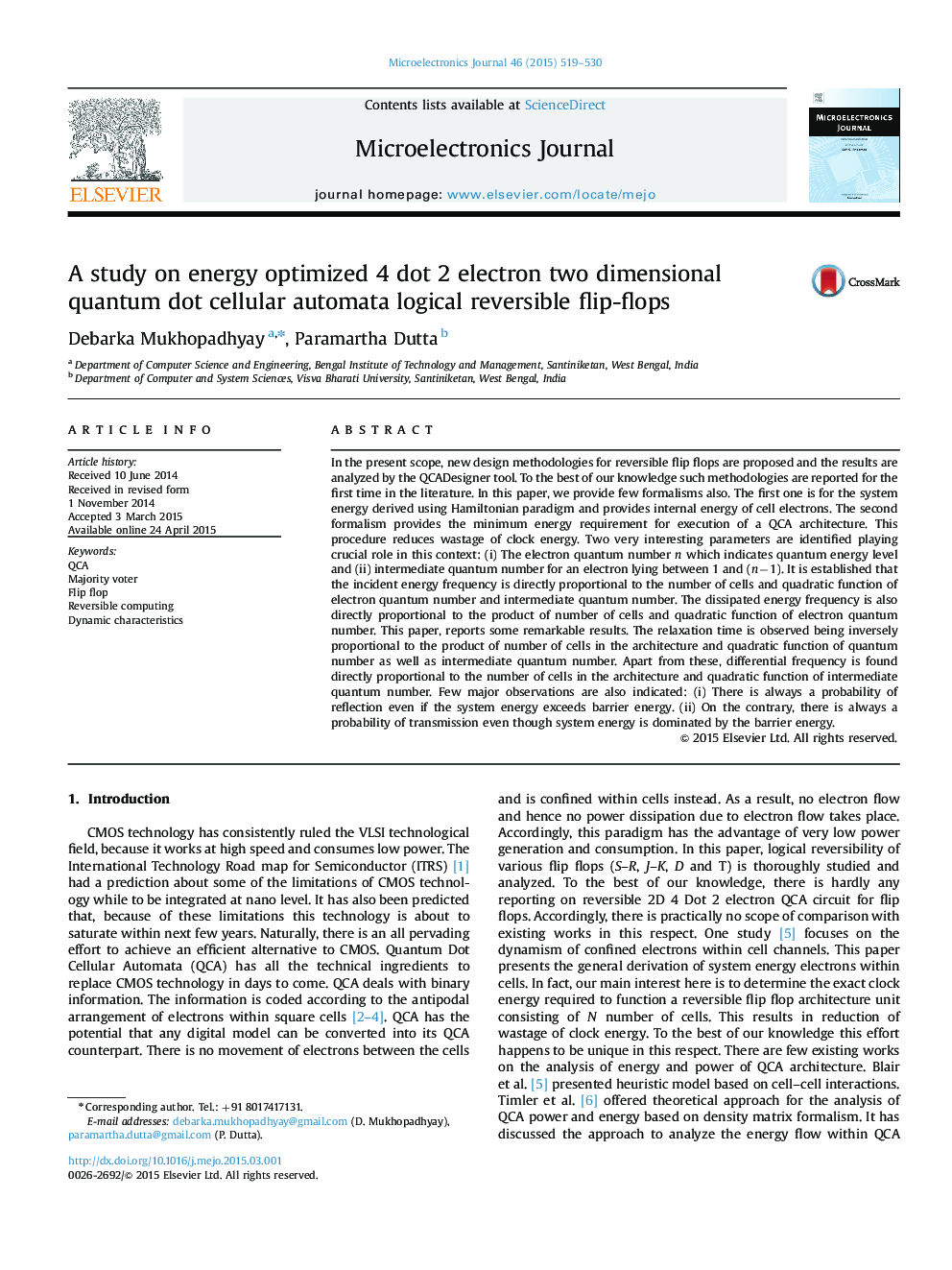| کد مقاله | کد نشریه | سال انتشار | مقاله انگلیسی | نسخه تمام متن |
|---|---|---|---|---|
| 541232 | 871448 | 2015 | 12 صفحه PDF | دانلود رایگان |
In the present scope, new design methodologies for reversible flip flops are proposed and the results are analyzed by the QCADesigner tool. To the best of our knowledge such methodologies are reported for the first time in the literature. In this paper, we provide few formalisms also. The first one is for the system energy derived using Hamiltonian paradigm and provides internal energy of cell electrons. The second formalism provides the minimum energy requirement for execution of a QCA architecture. This procedure reduces wastage of clock energy. Two very interesting parameters are identified playing crucial role in this context: (i) The electron quantum number n which indicates quantum energy level and (ii) intermediate quantum number for an electron lying between 1 and (n−1). It is established that the incident energy frequency is directly proportional to the number of cells and quadratic function of electron quantum number and intermediate quantum number. The dissipated energy frequency is also directly proportional to the product of number of cells and quadratic function of electron quantum number. This paper, reports some remarkable results. The relaxation time is observed being inversely proportional to the product of number of cells in the architecture and quadratic function of quantum number as well as intermediate quantum number. Apart from these, differential frequency is found directly proportional to the number of cells in the architecture and quadratic function of intermediate quantum number. Few major observations are also indicated: (i) There is always a probability of reflection even if the system energy exceeds barrier energy. (ii) On the contrary, there is always a probability of transmission even though system energy is dominated by the barrier energy.
Journal: Microelectronics Journal - Volume 46, Issue 6, June 2015, Pages 519–530
